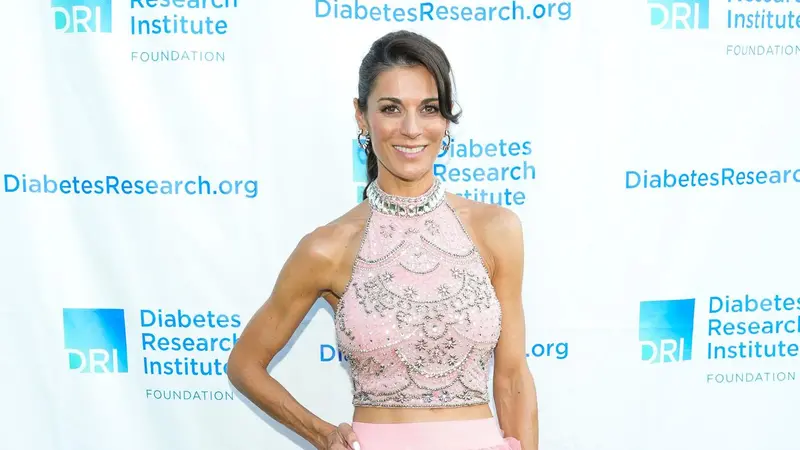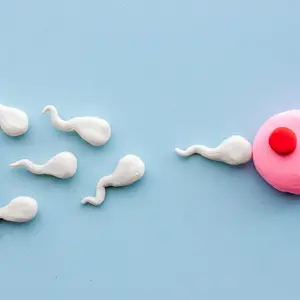
Wise Words
Wise Words
Patricia Silverstein Making a Difference in the Diabetes Fight
Patricia Silverstein has a dream: to prevent the unnecessary suffering of people with diabetes. Together with her husband, Roger, leading researcher Dr. Camillo Ricordi, Latina advocate Rosita Romero and numerous other collaborators, she is actively working to make this dream a reality. A cure is on the horizon, and a simple blood test that measures Type 1 diabetes antibodies promises an opportunity to stop disease progression long before it is even diagnosed. Silverstein’s efforts target both of these fronts.
She and Roger established the Silverstein Dream Foundation and have raised nearly $1 million for treatments and cures. She also offers diabetes workshops to underserved communities and speaks with decision-makers at large corporations and investment firms to drive philanthropic dollars toward the funding of clinical trials required by the U.S. Food and Drug Administration (FDA) before approving cutting-edge therapies.
Diabetes Statistics
Diabetes occurs when glucose levels in the bloodstream are too high. Dietary changes, oral medications and insulin are commonly used to regulate this condition. Over time, diabetes can cause a host of health problems such as heart disease, nerve damage, eye problems and kidney disease. According to the National Institute of Diabetes and Digestive and Kidney Diseases, an estimated 38 million Americans had the disease in 2021—the most common forms being Type 1 (an autoimmune condition that may be caused by genetics) and Type 2 (a form that develops over time as a result of obesity, lack of exercise and other lifestyle factors).
Saving Her Sister
Born and raised in Barcelona, Spain, Silverstein has a younger sister, Laura, who was diagnosed with Type 1 diabetes when she was just 6 years old. “I remember that my mother was very scared. It was a lot for her to take on because she was already the one working and supporting everyone in the family,” she recalls. “Laura was taking insulin; they were poking her finger a lot to know if her sugar was high or low. She was a really small child, so they had to do it in the school. My sister grew up with a lot of fear.”
In 2020, when Laura was 29, she became gravely ill from disease complications. “She had developed neuropathy and retinopathy and was losing her eyesight, but her severe kidney disease was the wake-up,” Silverstein explains. “By the end of 2020, she had lost 50 percent of kidney filtration in two months. She was living by herself in Barcelona, and it broke my heart. I was really scared for her. I thought she wasn’t going to make it.”
Silverstein, who lives in New York City, went into action mode, desperately looking for a way to save her little sister. The turning point came upon meeting Dr. Camillo Ricordi, a University of Miami Miller School of Medicine professor of surgery, biomedical engineering, microbiology and immunology, and chief of the Division of Cellular Transplantation; director emeritus of the Diabetes Research Institute; founder of The Cure Alliance; and author of The Healthspan Code.
“Dr. Ricordi jumped on a zoom call with us, and that was the beginning of our relationship with him,” recalls Silverstein. “In the beginning, Laura was prescribed omega-3, vitamin D and other supplements to reduce her blood pressure because it was very high, but then once she was stabilized, he proposed a stem cell infusion therapy that could possibly regenerate kidney tissue and improve diabetes complications.”
The proposed treatment was not yet available to the public, but Ricordi was able to obtain FDA approval as an emergency life-saving treatment. “Patricia’s sister received an infusion of mesenchymal stem cells (MSC) to block the progression of chronic kidney disease. While the infusion helped her glucose control and eliminated her insulin requirements, unfortunately it was unable to block the progression because her kidney disease had already advanced beyond the point of no return,” explains Ricordi. A year-and-a-half ago, Laura received a simultaneous kidney and pancreas transplant, which saved her life. Today, she follows a healthy diet and lifestyle, and she is able to maintain normal glucose levels without the use of insulin.
“Laura’s case was instrumental in helping us obtain approval from the FDA to launch a bigger trial in stage-3 chronic kidney disease, where you still have tissue that you can regenerate and induce tissue repair and regeneration,” says Ricordi. “We are very enthusiastic to start this new clinical trial and to try to help patients avoid the progression of chronic kidney disease, which hits one in three adults with diabetes and 38 percent of people above the age of 65, even without diabetes.
“This will be the first trial that we do in the United States with this new therapeutic strategy, and our collaboration with Patricia and Roger and with The Cure Alliance is what allowed this trial to get started. Roger joined the board of the Diabetes Research Institute Foundation, and Patricia is on the board of The Cure Alliance, so they are both involved in very important projects. They work to deliver a cure for diabetes and other chronic degenerative conditions associated with unhealthy aging—chronic kidney disease and pulmonary diseases that are also a focus of their Silverstein Dream Foundation.”
Life-Saving Treatments on the Horizon
Kidney and pancreas transplants are generally successful, but require lifelong anti-rejection drugs, limiting their applicability to children and other at-risk individuals. The Cure Alliance is supporting a clinical trial to replace the most toxic immunosuppressive agent with a new antibody that is much more benign. In early 2025, another trial will test a new technology designed to completely eliminate anti-rejection drugs. (Learn more at iTolerance.com.)
In the 1980s, Ricordi developed a protocol to isolate insulin-producing islet cells from a donor pancreas and introduce these cells in a blood transfusion into the liver, where they act like a double organ that does the job of the liver and the endocrine pancreas. The effect of this transfusion is that the patient no longer needs insulin to modulate blood glucose. “We have over 1,000 patients treated with islet cells that we have followed for over 20 years, indicating it also benefits patient survival. It is very exciting as a procedure, but it has been limited by this need for anti-rejection drugs that limit the applicability to the most severe cases of diabetes,” Ricordi explains.
Once the need for anti-rejection drugs is eliminated, there will be a huge demand for this treatment. “I am honored to be co-chairing the steering committee of two trials of stem cell-derived islet transplantation,” Ricordi says. “Several groups I have been collaborating with have realized that you can generate cells and make them differentiate into insulin-producing cells through a technology invented by Nobel Prize-winning Shinya Yamanaka. We recently reported 16 cases of successful transplant of stem-cell derived islets that could represent an unlimited source of insulin-producing cells.”
Ricordi expresses enthusiasm for the future of diabetes research. “Ten years ago, we were saying, ‘Hopefully, one day, we will be at clinical level of bringing these therapies to patients,’ but now more and more of these advancements from decades of research are ready to be rigorously validated through clinical trials,” he says. “I don’t want to raise false hope, because we have been saying there will be a cure in the next five years for the past three decades, but the reality is that any of these new trials could be the one. It is difficult to predict, but we are completely all-in and focused to make it happen in the fastest, most efficient way possible.”
The Promise of Early Detection
The Silverstein Dream Foundation is currently funding the GrassrootsHealth Nutrient Research Institute (GHNRI) study, which will test approximately 100 people between the ages of 7 and 25 for Type 1 antibodies, as well asomega-3, vitamin D, magnesium, inflammation and glucose levels, to identify those that are highly predisposed to develop diabetes. Based on the results, participants will receive treatments and supplements, as well as health coaching for dietary and lifestyle changes designed to improve the targeted biomarkers and reverse disease progression before it even begins.
“Retesting in six months will hopefully show an improvement in their levels. We hope that in a year, we can start conversations with health authorities in Washington, D.C., about implementing mandatory pediatric screening based on the evidence of our research, so all kids can get tested for Type 1 antibodies as part of their pediatric care, and then have a better understanding of how to feed and treat these kids to prevent Type 1 diabetes,” Silverstein says. “I believe diabetes prevention is as important as the research for a cure. We support the research for a cure, of course, but that’s something that I cannot control because I’m not a research doctor. What I can control is preventing other young kids and adolescents from becoming as ill as my sister.”
Work With Low-Income Latinos
Last year, Silverstein attended a reception in Puerto Rico where she met Rosita Romero, executive director and co-founder of the Dominican Women’s Development Center (DWDC), a Washington Heights, New York-based nonprofit that advocates for gender equality and social justice for low-income Latin communities, and also provides invaluable services such as English classes, help with health insurance and job placement, childcare programs and domestic violence assistance. The two ladies became fast friends and collaborators.
“Latinos are more affected by diabetes, heart conditions, asthma and other chronic conditions than other members of the population,” says Romero. “When I told Patricia about our program to help people with diabetes and other chronic diseases, she offered to present workshops in Spanish to teach families how to prevent and manage diabetes, and when she told me about the work she’s doing with the Diabetes Research Institute Foundation, we agreed to recruit individuals to participate in her study. It is a wonderful collaboration.”
Romero points out, “One of the things I love about Patricia is that she is optimistic about finding a cure based on the experience with her younger sister. Her message is one of hope that people don’t have to die from diabetes or diabetes complications, that we as individuals can take steps to help us live and manage the disease, and eventually it can be reversed. She is a woman with a cause—so inspiring in her commitment and how she brings so many people around her for this cause.”
Sandra Yeyati is national editor of Natural Awakenings.
Original article published at Natural Awakenings National


 By
By






